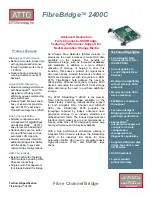
WiSnap User Manual 4.41 05282015-ML
Page 13
however,
s uart baud 115200
is NOT valid.
Numbers can be entered as either decimal, (like 115200 above) or hex. To enter hex, use “0x” before the value:
0x<value>.
For example, the hex value FF would be entered as 0xFF.
4.2 Command Organization
Commands fall into 5 general categories:
SET COMMANDS -
Changes settings immediately and permanently (save command issued).
GET COMMANDS -
Retrieve the permanently stored information for display to user.
STATUS COMMANDS - See
what is going on with the interface, IP status, etc.
ACTION COMMANDS -
Perform action such as scan, connect, disconnect, etc.
FILE IO COMMANDS -
Upgrade, load and save configuration, delete files, etc.
NOTE:
You must save any changes made or the module will load the previous settings upon reboot or power up.
When the system boots, all configuration data is loaded into RAM variables from the file called “config”. The
set
commands
actually only modify the RAM copy of variables in the system. In general, the IP, WLAN and UART settings need a
save
and
reboot
to take effect, since they operate at boot up time. For example: At power up, you will only associate, set the channel
and get your IP address once.
Most of the other commands take effect immediately like the COMM settings and timers. This allows temporary change of
parameters “on the fly” to test features, minimize power usage and save on flash re-write cycles.
Once all configuration is complete, the user must save the settings using the
save
command to store the configuration data,
otherwise it will not take effect upon reboot or reset. Multiple configurations can be stored by using the
save <filename>
command, and these configurations can be loaded using the
load <filename>
command.
5 SET Commands
These commands begin with
set
. There are 11 major categories.
AD-HOC -
controls the ad-hoc parameters
BROADCAST -
controls the broadcast hello/heartbeat UDP message
COMM -
communication and data transfer, timers, matching characters
DNS -
DNS host and domain
FTP -
FTP host address and login information
IP -
IP settings
OPTION -
optional and not frequently used parameters
SYS -
system settings such as sleep and wake timers
TIME -
timer server settings
UART -
serial port settings such as baud rate and parity
WLAN -
wireless interface settings, such as SSID, channel, and security options
5.1 AD-HOC Parameters














































